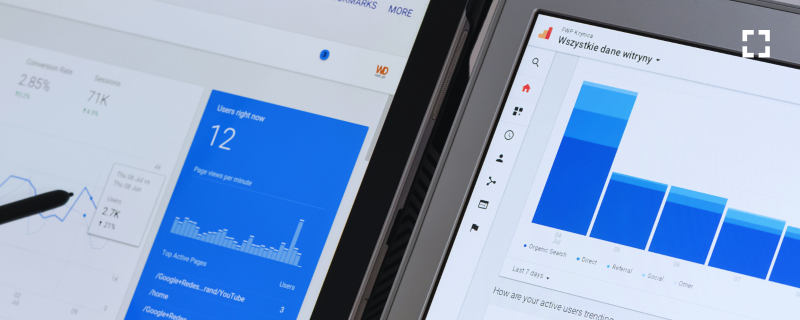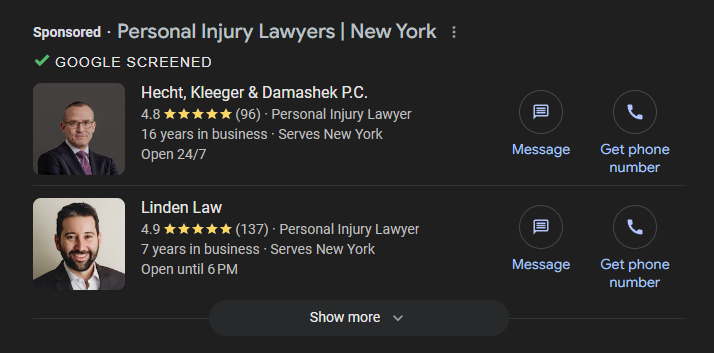
Local Services Ads (LSAs) are transforming how lawyers attract clients online.
What if your law firm’s ad was the first thing people saw on Google, even appearing above traditional pay-per-click ads? LSAs offer this powerful advantage, yet many firms either don’t know they exist or aren’t sure how to run campaigns effectively.
Unlike traditional Google Ads, which charge per click, LSAs operate on a pay-per-lead model, ensuring you only pay for genuine leads.
Local Services Ads for lawyers help potential clients find, learn about, connect with, and engage attorneys in all practice areas. They present a huge opportunity for firms prepared to be early adopters.
In this article, you’ll learn:
Let’s dive in.
LSAs were initially launched as a beta program called Home Service Ads in 2015, but were limited to a few types of businesses in select cities across the United States and Canada.
It wasn’t until the end of 2017 that Home Service Ads rebranded into LSAs and began expanding to more cities and a broader range of industries. LSAs started making a significant impact on lawyer advertising in 2020.
When LSAs first became available, they were restricted to estate planning and immigration lawyers in a few local markets. Today, LSAs are accessible to most types of law firms across the U.S. This expansion has opened new opportunities for lawyers to connect with potential clients in their local areas more effectively.
The primary advantage of LSAs is their prime positioning on the Search Engine Results Page (SERP). When someone searches for services like “personal injury lawyer Boston,” LSAs appear at the very top of Google Search results, above traditional pay-per-click ads. This top-of-page visibility can significantly increase the chances of attracting potential clients.
They look like this.

Local Services Ads differ from Google Ads in that they are a pay-per-lead advertising format designed to connect local service providers, such as lawyers, plumbers, and electricians, with potential customers in their area.
Unlike traditional Google Ads, which operate on a pay-per-click (PPC) model, LSAs charge businesses for each lead generated. These ads include important information such as the lawyer’s name, ratings, and reviews, providing a snapshot of the lawyer’s credibility and making it easier for clients to make informed decisions.
LSAs offer several unique benefits:
Another important difference is that advertisers cannot select specific keywords for their LSAs. Instead, they select practice areas, and Google determines the relevance of the ads based on several factors, such as the number of positive reviews, proximity to the searcher, and bid level.
To understand how LSAs compare to traditional Google Ads, let’s analyze anonymized data from our legal clients who have used both types of ads.
We’ll examine key metrics such as cost per lead, conversion rate, and overall return on investment (ROI).
A primary advantage of LSAs is their pay-per-lead model, which can sometimes result in a significantly lower cost per lead compared to traditional Google Ads.
For example, one of my law firm clients has an average cost per lead of $25, whereas they see an average cost per lead of $50 using traditional Google Ads. This significant difference highlights the cost-effectiveness of LSAs, making them a potentially worthwhile advertising strategy depending on your practice area and location.
When it comes to ROI, both LSAs and traditional Google Ads offer distinct advantages depending on the firm’s target audience and advertising goals.
LSAs typically deliver a higher ROI for local law firms due to their lower cost per lead and higher conversion rates. However, traditional Google Ads remain highly effective for firms with a broader target audience or those aiming to increase website traffic and brand awareness.
Our clients utilizing LSAs achieve an average ROI of 300%, compared to 200% for those using traditional Google Ads.
Targeting and reach are crucial aspects of any advertising strategy. LSAs and traditional Google Ads offer different strengths in these areas.
LSAs are designed to connect local law firms with potential clients in their immediate area, making them highly effective for local targeting. Conversely, traditional Google Ads offer a wider reach, enabling law firms to target a broader audience, including both local and non-local potential clients.
To maximize your advertising efforts, I recommend developing a strategy that leverages the strengths of both LSAs and traditional Google Ads.
Here are some tips.
Most law firms want to attract local clients. For that goal, there’s no better advertising method than LSAs.
By maintaining a high-quality profile, you can attract more local clients searching for legal services.
For law firms with a broader target audience, traditional Google Ads can effectively drive website traffic and enhance brand awareness.
Traditional Google Ads allow you to reach a wider audience, including those outside your immediate geographic area, which can be beneficial for expanding your client base and attracting diverse clients.
For the best results, integrate both LSAs and traditional Google Ads into your advertising strategy.
Use LSAs to capture high-quality leads from local searches, focusing on potential clients who are actively looking for legal services in your area. At the same time, Google Ads can help you build broader brand awareness and drive traffic to your website.
By combining these two ad types, you can maximize your reach and attract a diverse range of clients.

“My website continues to dominate all the top website searches in my industry and my business has grown 10-fold as a result.”
Oykhman Criminal Defence
Let’s take a closer look at how LSAs have performed for one of our clients.
This client, a local law firm, implemented both LSAs and traditional Google Ads to reach potential clients in their area.
By analyzing their data, we observed the following results:
These results highlight the effectiveness of LSAs for local service providers like lawyers, who benefit from the lower cost per lead, higher conversion rates, and improved ROI.
Integrating LSAs and Google Ads can help you get your firm in front of more prospects than either one alone. Using LSAs for local engagement coupled with the expansive targeting of Google Ads creates a comprehensive strategy that leverages the strengths of each platform for maximum ROI.
Ready to elevate your advertising strategy with both LSAs and traditional Google Ads? Reach out today for a free consultation, where you’ll learn how we can help you leverage these tools to bring in more clients.
Ready to maximize your marketing budget? Fill out the contact form or call us today for a complimentary consultation. We will listen to your story, work to define your business objectives, and recommend an approach to deliver maximum ROI for your firm.
By using this website, you consent to our use of cookies in accordance with our Cookie Policy. Cookies help us enhance your browsing experience and provide personalized content. If you do not agree to our use of cookies, please adjust your browser settings accordingly.